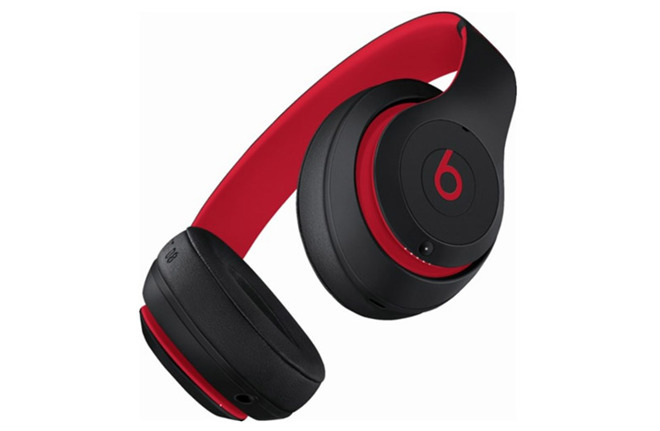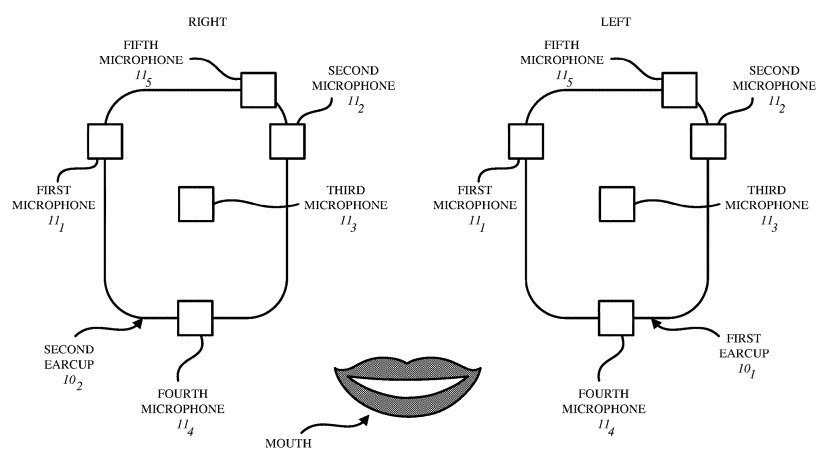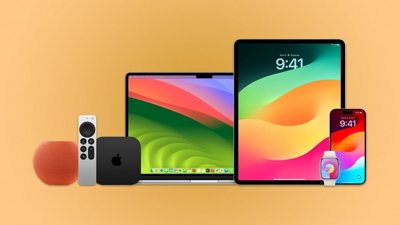Future Apple headphones could detect how they are worn with a microphone array
Apple is continuing to come up with ways to solve the problem of wearing headphones the wrong way around, by coming up with a detection method to determine how the audio accessory is being worn and switching channels, just by listening to the user's voice.
The patent application published by the United States Patent and Trademark Office on Thursday called "System and method for automatic right-left ear detection for headphones" is relatively self-descriptive in its title. Using the method, the headphones work out whether the user has placed the headset on in one of the two ways it could be worn, to always allow the left-channel audio to play through the left-hand earcup and the right-channel audio to the right-hand version.
The detection of which ear would allow for the production headphones that don't appear to have any left or right side indications, be it by physical design or by labelling. Typically most headphones and earphones offer some indication of which side the earpiece is meant for, such as by the letter L or R, though the inclusion of earhooks or the accessory's physicality could force users into using the right orientation.
In Apple's patent application, the system uses a collection of five microphones spaced around each earcup in strategic positions, including one on the front and back sides, one below, one at the top and offset to the "left" of the earcup when viewed externally, and one inside the earcup pointing towards the user's ear.
By listening to the voice of the user, and monitoring the volume of the voice by each microphone, the headphones can determine which edge is closest to the user's mouth, and therefore which orientation the headphones reside. The offsetting of the top-side microphones also allows for just those two microphones to be used, with the logic the microphone of the two that has the louder volume is closer to the mouth.
The system also suggests that using three or more microphones from just one earcup could be used to perform the task, rather than relying on microphones from both sides, as enough information would be pulled from volume levels on either side of one earcup to determine orientation.
In all cases, when the orientation is worked out, the relevant audio signal is fed to the appropriate earcups.
The plurality of microphones could also help to eliminate noise when the headset is used for calls or vocal commands. The extra data points from multiple microphones could be employed for beamforming to more accurately capture the voice, as well as for noise reduction.
This is not the only method Apple has come up with to solve the problem of mis-applied headphones. Another patent application revealed in October suggested the use of capacitive proximity sensor electrodes within the earcup, which could sense the presence of the ear and its shape to work out if it is the left or right ear, for similar purposes.
That proposal could also be used in a pillow, for example, to work out which way the user faces while sleeping.
Apple has also invested time and effort into other headphone-related items, including a patent for "spatial headphone transparency" that could adjust the audio feed to make it sound like the user is hearing the audio from their surroundings and not from headphones. A "dual-mode" headphone that could double up as a speaker has also been suggested, along with headphones with sensors that could be used for health monitoring.
The iPhone producer has been rumored to be coming up with high-end over-the-ear headphones under its own name, rather than under the Beats brand. Rumors alleged a shipment of the audio headwear before the end of 2018, but the chances of that occurring are, at this stage, quite slim.
 Malcolm Owen
Malcolm Owen













 Amber Neely
Amber Neely

 William Gallagher
William Gallagher


 Andrew Orr
Andrew Orr
 Christine McKee
Christine McKee







